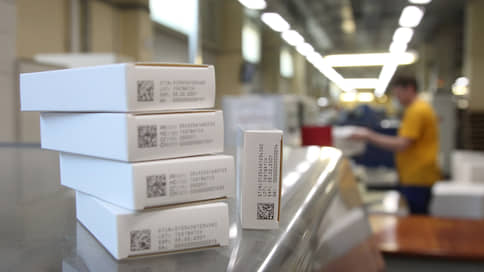Authorities plan to expand product labeling
[ad_1]

Further development of the product labeling system is planned to be ensured by strengthening its functionality to combat illegal or low-quality products while simultaneously expanding the coverage of new types of products by this mechanism – labeling is now mandatory for 17 product groups. Among the areas outlined yesterday by the Ministry of Industry and Trade is the introduction of automatic “blocking” of illegal goods, which is still ongoing as an experiment, including in the Eurasian Economic Union (EAEU).
In Russia, 17 product groups are already subject to labeling (such as medicines, water, shoes, tobacco), including for six of them it became mandatory in 2023 (this includes wheelchairs, antiseptics, dietary supplements), she reported on Tuesday at a round table meeting dedicated to the results of the labeling system, Deputy Head of the Ministry of Industry and Trade Ekaterina Priezzhaeva. In addition, another 11 product traceability systems were launched in experimental mode last year (in particular, for canned fish, animal feed, and children’s toys). On January 15, 2024, new experiments began on labeling cosmetics and household chemicals, beer and low-alcohol drinks in cans.
With the use of labeling, according to the Center for the Development of Advanced Technologies (CRPT; system operator), in 2023, the turnover of tobacco products in violation of established prices for the year decreased by 21%, sales of water and perfumes without permits – by 98% and 85%, respectively. turnover of unmarked shoes – by 62%. Chairman of the Board of Directors of the CRPT Mikhail Dubin explained that this effect is largely ensured by the integration of the labeling system with other information systems, which makes it possible to see data discrepancies. As noted by the head of the main department of customs control after the release of goods by the Federal Customs Service, Sergei Semashko, information from marking systems and customs bases makes it possible to determine areas of control with a probability higher than 70%. In 2023, according to customs data, more than 1.3 thousand tons of unmarked goods were identified.
Let us explain that the integration of the labeling system with the databases of government agencies has been ongoing since 2022 and has now been built with all control departments. Indicators of the efficiency of government agencies’ work with the labeling system (in particular, “whitewashing” the market; see “Kommersant” dated September 1, 2022) were approved for 15 product groups. There are plans to create such indicators for all groups of labeled goods. Work is also underway to introduce risk indicators, which allow for targeted checks when they are “triggered”: now 30 indicators have been introduced for ten product groups, and indicators for medicines and beer have also been separately approved.
It is planned to further adjust the system in terms of the possibility of introducing a ban on the movement of goods that do not meet the requirements. In 2023, an experiment was launched to block the sale of goods at checkouts (for example, expired goods and products with a labeling code that has already been taken out of circulation will not be allowed through). This mechanism will be gradually introduced on a mandatory basis from April 1 this year and will apply to 12 product groups, including tobacco, water, and dairy products. The Ministry of Industry and Trade is considering opportunities to expand this mechanism so that in the future it will cover all labeled goods – for example, its use in relation to medicines and medical products is being studied.
For the same purposes, an experiment has been launched to “link” permitting documents to labeling codes (see “Kommersant” dated July 28, 2023), which will make it possible to verify data from market participants on goods and lot volumes with information in permitting documents. The result of the full implementation of this mechanism will be automatic verification of goods and a ban on their further movement if a violation is detected. The Ministry of Industry and Trade is working to introduce similar changes to the supranational legislation of the EAEU. In general, Sergei Semashko added, it is worth emphasizing work within the EAEU in terms of regulating the labeling system, since “the desynchronization of the implementation of the traceability system provokes a flow of goods clearance to other countries.”
[ad_2]
Source link






